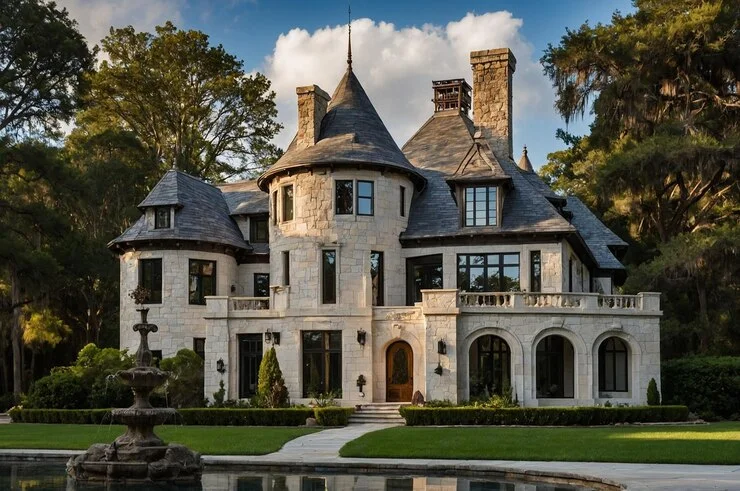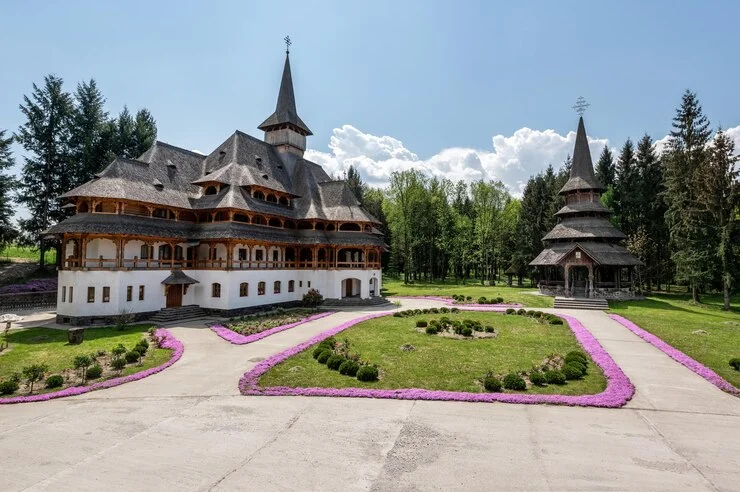Colonial stone houses have a timeless charm that showcases the beauty of history and traditional craftsmanship. Builders constructed these houses to last, using thick stone walls that provided both durability and elegance. Their historical significance makes them a favorite choice for preserving architectural heritage in modern designs.
The “squares cut out” in colonial stone houses are unique features that add both function and beauty. These squares were often used for ventilation or natural light while maintaining the home’s sturdy design. They demonstrate how colonial builders skillfully combined practicality with visual appeal, creating homes that still inspire today.
These square cut-outs are essential to a colonial design house, blending tradition with modern needs. They preserve the historical look of the home while offering modern functionality. By integrating these features, homeowners can maintain the classic style while embracing contemporary living standards.
The Architectural Significance of Colonial Houses
Colonial houses come in various types, each with unique features that reflect the styles of their time. These homes showcase symmetry, pitched roofs, and timeless designs from Georgian to Dutch Colonial. Their architecture symbolizes elegance, blending traditional charm with functional layouts.
Stone houses are a hallmark of traditional colonial house plans, known for their durability and lasting appeal. Builders chose stone for its strength and ability to withstand harsh weather conditions. These homes have stood the test of time, preserving the legacy of colonial craftsmanship.

The colonial exterior house often features squares or patterns that add depth and character to its design. These elements enhance the home’s aesthetic by balancing simplicity with intricate details. Together, they create a stunning look that continues to captivate modern homeowners.
Squares Cut Out of Colonial Stone Houses
The “squares cut out” in colonial stone houses refer to small openings strategically placed in the home’s structure. The design of these squares carefully blends functionality with the overall appearance of the colonial farmhouse exterior. Their presence highlights the ingenuity of colonial builders in creating homes that were both practical and visually appealing.
Traditionally, these squares served multiple purposes, such as ventilation, and allowing fresh air to circulate throughout the house. They also provided natural light to interior spaces, reducing the need for candles during the day. Additionally, they added decorative appeal, enhancing the symmetrical beauty of stone houses while maintaining their sturdy construction.
In the 1970s colonial exterior remodel, these features were often simplified or modernized to suit contemporary tastes. However, in the modern house’s colonial exterior, architects have reintroduced these squares to preserve historical charm while updating functionality. This balance ensures that the classic style of colonial stone houses remains relevant in today’s home designs.
Colonial Portico Designs and Squares
Colonial portico designs are famous for their emphasis on symmetry and balance, creating a welcoming and elegant entrance. The “squares cut out” feature often complements these designs, adding depth and visual interest. Together, they create a cohesive look that highlights the beauty of the colonial design house.
Squares incorporated into portico designs often appear in railings, windows, or decorative trims, enhancing the entryway’s sophistication. These elements provide a structured appearance that reflects the classic charm of colonial architecture. They serve both functional and decorative purposes, blending tradition with timeless appeal.
In colonial homes, squares help achieve a harmonious balance that draws attention to the portico’s architectural details. By integrating these shapes, designers elevate the exterior while maintaining the historical essence. This approach ensures that colonial porticos remain iconic features in both traditional and modern homes.
Adapting Colonial Stone Houses to Modern Needs
Modernizing colonial stone houses involves blending contemporary features with traditional elements like squares to maintain their timeless charm. Homeowners often add updates such as energy-efficient windows while preserving the iconic modern house colonial exterior design. This careful balance allows the home to meet today’s standards while celebrating its historical roots.
When remodeling, 1970s colonial exterior remodel ideas can inspire integrating classic squares with modern touches. For example, replacing older square features with decorative modern panels enhances both style and functionality. These updates preserve the original aesthetic while adapting the home for modern living.
Trends in colonial farmhouse exterior remodels focus on combining rustic details with sleek, contemporary finishes for a unique look. Designers often highlight traditional squares in doorways, windows, or porticos while introducing modern materials. This approach creates a beautiful fusion of old-world elegance and modern convenience.
Traditional Colonial House Plans with Squares
Traditional colonial house plans often feature square cut-outs in windows, walls, or decorative trims to enhance their design. These squares serve as key elements that define the timeless look of colonial exterior houses. Their integration adds visual balance and helps preserve the charm of these architectural masterpieces.
Square cut-outs not only add beauty but also improve functionality by allowing natural light and airflow into the home. For instance, many colonial homes used these squares for ventilation while maintaining the structural strength of stone walls. This feature demonstrates how traditional designs were both practical and aesthetically pleasing.

In modern interpretations of traditional colonial house plans, squares remain essential to achieving authenticity and elegance. They continue to enhance the colonial exterior house, blending historical appeal with modern construction techniques. These timeless features ensure colonial designs stay relevant and captivating for generations to come.
Final Thought
The squares cut out of colonial stone houses represent a perfect combination of practicality and artistic craftsmanship. Designers created these features to improve ventilation and lighting while adding charm to the colonial design house. Their timeless appeal highlights the ingenuity of colonial architecture, which continues to inspire home designs today.
By incorporating these elements into modern remodels or restoration projects, homeowners can preserve the legacy of colonial homes. Whether through subtle updates or bold redesigns, squares bring historical authenticity to any home improvement. Embracing these features ensures that the charm of colonial stone houses lives on for future generations.
Frequently Asked Questions (FAQs)
Q1: What is the layout of a colonial house?
A colonial house often has two or more stories with a simple rectangular shape. The rooms are usually arranged symmetrically on both sides of the central hallway. The design focuses on balance and symmetry, with large windows and a steep roof.
Q2: How to style a colonial house?
To style a colonial house, use classic furniture like wooden chairs and tables with simple designs. Add neutral colors for walls and use patterns like stripes or checks for fabrics. Decorate with vintage items and natural materials like wood and stone for an authentic look.
Q3: What are the disadvantages of a colonial-style house?
Colonial-style houses can be expensive to build or maintain because of their size and materials. They may have narrow rooms and high ceilings, which can be hard to heat or cool. Also, they may require regular maintenance due to their traditional features and older construction methods.
Q4: What is a brick colonial home?
A brick colonial home is a house built using brick as the main material for the exterior. It typically features a traditional, symmetrical design with a steep roof and a front-facing portico. The brick adds a classic, sturdy look and helps with insulation.
Q5: What are the characteristics of a colonial-style house?
Colonial-style houses often have rectangular shapes, steep roofs, and central hallways. They are symmetrical, with windows and doors placed evenly on both sides. These houses may also have decorative columns or porticos at the entrance for added elegance.
Q6: How to make colonial bricks?
To make colonial bricks, mix clay, water, and sand, then mold them into rectangular shapes. The process involves baking the bricks in a kiln at high temperatures, making them hard and durable. After cooling, they are ready for use in construction.
Q7: What is a colonial brickmaker?
A colonial brickmaker is someone who creates bricks for building homes and structures. In colonial times, brickmakers used clay and natural resources to make bricks by hand. These bricks were then fired in a kiln to harden them for use in construction.
Q8: How do you make brick blocks?
To make brick blocks, combine clay, water, and other materials like sand or ash. The mixture is then shaped into blocks using molds, and they are left to dry. After drying, the blocks are baked in a kiln to make them strong and durable.
Q9: How did they make bricks in the old days?
In the old days, people made bricks by mixing clay and water and then shaping them by hand or in molds. They dried the bricks in the sun before baking them in a kiln to harden. They performed this process slowly and carefully to create strong, long-lasting bricks.
Q10: What are bricks with holes called?
Bricks with holes are called “perforated bricks.” These bricks are designed with holes to make them lighter and improve insulation. The holes also help with the bonding between bricks when they are stacked.
Q11: What is the strongest brick?
The strongest bricks typically come from fired clay, baked at very high temperatures. Known as “engineering bricks,” they offer exceptional strength and durability. Builders often use them in load-bearing walls or high-stress areas.
Q12: How to turn clay into bricks?
To turn clay into bricks, first mix it with water and other materials like sand. Then, shape the mixture into rectangular blocks and dry them in the sun. Finally, bake the dried blocks in a kiln to harden them into bricks.